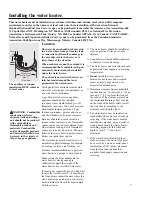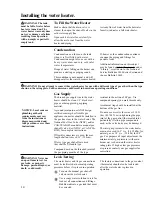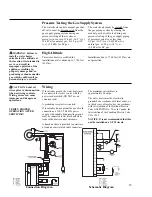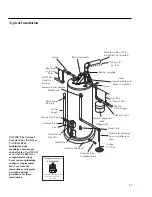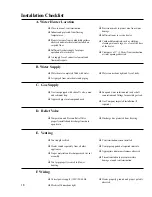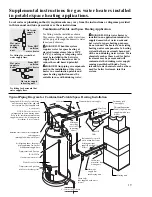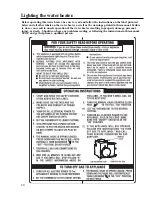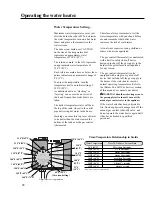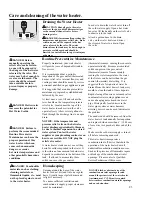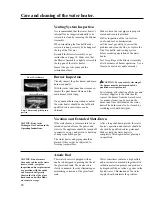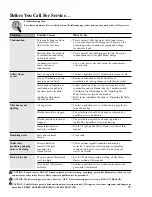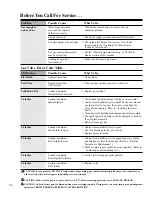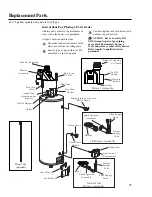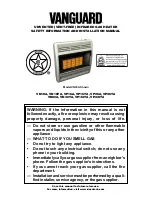
DANGER:
Hotter water
increases the Potential
for Hot Water SCALDS
.
Households with small
children, disabled, or elderly
persons may require a 120°F
(49°C) or lower gas control
(thermostat) setting to
prevent contact with HOT
water.
!
Water Temperature Setting
The temperature of the water in the water
heater can be regulated by setting the
temperature dial on the front of the gas
control (thermostat).
Safety and energy conservation are factors
to be considered when selecting the water
temperature setting of the water heater’s
gas control (thermostat(s)). The lower the
temperature setting, the greater the savings
in energy and operating costs.
To comply with safety regulations, the gas
control (thermostat) was set at its lowest
setting before the water heater was shipped
from the factory. The recommended
starting point temperature is 120°F (49°C).
Water temperatures above 125°F (52°C)
can cause severe burns or death from
scalding. Be sure to read and follow the
warnings outlined in this manual and on
the label located on the water heater near
the gas control thermostat.
Mixing valves are available for reducing
point of use water temperature by mixing
hot and cold water in branch water lines.
Contact a licensed plumber or the local
plumbing authority for further
information. (See page 4 for more details.)
The chart below may be used as a guide in
determining the proper water temperature
for your home.
Safety Precautions
Do
turn off manual gas shut-off valve if water heater
has been subjected to over heating, fire, flood,
physical damage or if the gas supply fails
to shut off.
Do Not
turn on water heater unless it is completely
filled with water.
Do Not
turn on water heater if cold water supply
shut-off valve is closed.
Do Not
allow combustible materials such as
newspaper, rags or mops to accumulate near
water heater.
Do Not
store or use gasoline or other flammable
vapors and liquids, such as adhesives or paint thinner,
in vicinity of this or any other appliance.
If such flammables must be used, open doors
and windows for ventilation, and all gas burning
appliances in the vicinity should be shut off including
their pilot burners, to avoid vapors lighting.
NOTICE: Flammable vapors can be drawn by air
currents from surrounding areas to the water heater.
If there is any difficulty in understanding or following
the Operating Instructions or the Care and Cleaning
section, it is recommended that a qualified person or
serviceman perform the work.
Operating the water heater.
CAUTION: Hydrogen gas can be produced in a hot water system served by this water heater that has not been used for a
long period of time (generally two weeks or more). HYDROGEN GAS IS EXTREMELY FLAMMABLE!! To dissipate such
gas and to reduce risk of injury, it is recommended that the hot water faucet be opened for several minutes at the kitchen sink
before using any electrical appliance connected to the hot water system. If hydrogen is present, there will be an unusual sound
such as air escaping through the pipe as the water begins to flow. Do not smoke or use an open flame near the faucet at the
time it is open.
21
Adjustments
The gas valve employed on the heater is
equipped for total regulation of the main
burner and does not require adjustment.
The liquefied petroleum (LP) gas water
heater is equipped with a cast iron burner
that requires a primary air adjustment at
the time of installation.
An air shutter is located at the air opening
end of the burner.
To adjust the burner, loosen the air shutter
screw and close the shutter to soften the
flame or open the shutter to sharpen the
flame.
The proper flame should be soft blue, not
yellow or with a hard blue center.
Final air adjustment should be made after
5 minutes of continuous burning.

